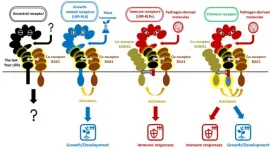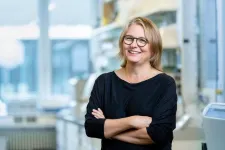Stimulating a nerve that runs between various organs and the brain with intense physical rehabilitation improved arm and hand function in people with stroke. The improved motor function remained at the end of the one-year follow-up. Vagus nerve stimulation uses an implantable device to stimulate the nerve with electrical impulses that help create new pathways in the brain to assist movement in impaired limbs. Embargoed until 4 a.m. CT/5 a.m. ET, Thursday, Feb. 1, 2024
DALLAS, Feb. 1, 2024 — Combining brain stimulation with intense physical rehabilitation helped stroke survivors recover movement in their arms and hands and maintain these improvements for one year, according to a study to be presented at the American Stroke Association’s International Stroke Conference 2024. The meeting will be held in Phoenix, Feb. 7-9, and is a world premier meeting for researchers and clinicians dedicated to the science of stroke and brain health.
“The recovery of arm and hand function after a stroke often stalls or even declines, leaving many patients with chronic motor deficits that limit their independence and quality of life. New treatments that can boost the benefits of physical rehabilitation are desperately needed,” said the study’s lead author Teresa J. Kimberley, Ph.D., a professor of rehabilitation science and physical therapy at MGH Institute of Health Professions in Boston.
Vagus nerve stimulation is the first approved neuromodulation device to aid in chronic stroke recovery. It was approved by the U.S. Food and Drug Administration in 2021 to treat moderate to severe upper extremity motor function deficits (physical movement and coordination of arms and hands) associated with chronic stroke.
“This is the first time that brain stimulation combined with rehabilitation therapy for stroke is available outside of a clinical trial. It could set the stage for even more advancements in recovery from other impairments beyond the arm,” Kimberley said. “This is a watershed moment for rehabilitation science.”
This study represents one-year outcomes in the VNS-REHAB pivotal trial, which studied people who had a stroke resulting in moderate to severe upper extremity impairment.
Two groups of participants (108 total people) — a control group and an experimental group — completed six weeks of in-clinic, intense rehabilitation paired with active or sham vagus nerve stimulation. All participants were implanted with the nerve stimulation device and then randomized to receive either real nerve stimulation or a sham stimulation that only turned on for a few pulses. The in-clinic therapy was followed by a three-month home exercise program for both groups. The active vagus nerve stimulation group continued the home exercise program for a year. After the six-week period of sham stimulation, the control group crossed over and received six weeks of active vagus nerve stimulation followed by a year of the home exercise program.
Before and after the stimulation and rehabilitation therapies, motor function was assessed with the Fugl-Meyer Assessment-Upper Extremity, which assesses motor impairment, and the Wolf Motor Function Test, which is a time-based method to evaluate upper extremity motor ability while providing a better understanding of joint-specific and total limb movements.
The final study results represent outcomes for arm and hand function in 74 stroke survivors after one year of physical rehabilitation treatment. Data was unavailable for the remaining 34 participants mainly due to the COVID-19 pandemic.
This analysis found:
At one-year, upper limb function improved by 5.3 points in the Fugl-Meyer Assessment-Upper Extremity and by 0.51 points in the Wolf Motor Function Test when compared to baseline. Vagus nerve stimulation therapy improved hand and arm function by 2-3 times more than intense rehabilitation alone. “The pairing of rehabilitation therapy with vagus nerve stimulation likely helps the brain strengthen new neural pathways – like building a bridge to bypass a damaged area,” Kimberley said.
“These long-term, pivotal results mirror our long-term results from an earlier pilot study where we found that patients continue to improve or maintain their gains up to three years after starting vagus nerve stimulation therapy paired with rehabilitation,” she said. “As a clinician, it is surprising to see someone with chronic stroke – stroke that in many ways is a progressive disease – continue to improve and not show a decline.”
Study details and background:
The vagus nerve stimulation device in this study included a pacemaker connected to a lead that wraps around the vagus nerve in the neck region. There’s one vagus nerve on each side of the body; each one runs from the lower part of the brain through the neck to the chest and stomach. VNS-REHAB trial participants were between the ages of 22-80 and had a stroke nine months to 10 years prior to study enrollment. Study participants in the experimental group were 64% male and 36% female; 79% white, 17% African American adults, 2% Asian, Indian or other adults, and 1% did not have any race reported. The control group was 65% male and 35% female; 78% white, 16% African American adults, 7% Asian, Indian or other adults, and 1% did not have any race reported. The study took five years to complete: 2017-2019 for enrollment, and the study ended in 2021. The study was triple-blinded, meaning neither the participants, the researchers testing participants nor the health care professionals treating participants knew which intervention group participants were in. Study limitations included the small sample size and lack of details about the rehabilitation therapy regimens followed by each participant over the one-year period, which were variable.
Future studies and an ongoing clinical registry will explore the long-term impact of active vagus nerve stimulation in real-world settings.
“Often after a stroke, people don’t seek additional treatment, thinking that their current impairments are permanent. This is not true! Paired vagus nerve stimulation opens a new avenue and new hope for these patients. I’m also excited about future research that will investigate vagus nerve stimulation paired with rehabilitation for other conditions, such as gait and speech impairments after stroke,” Kimberley said.
“These are encouraging findings,” said Joel Stein, M.D., FAHA, chair of the writing group for the American Heart Association’s/American Stroke Association’s 2021 Clinical Performance Measures for Stroke Rehabilitation and the Simon Baruch Professor and chair of the department of rehabilitation and regenerative medicine at Columbia University’s Vagelos College of Physicians and Surgeons; professor and chair of the department of rehabilitation medicine at Weill Cornell Medicine; and physiatrist-in-chief at NewYork-Presbyterian Hospital. “These results demonstrate the durability of the effects of vagus nerve stimulation, an important finding that supports the use of this modality to enhance recovery post-stroke. There is some evidence for lasting improvement with continued use outside of a formal exercise program, which is intriguing, although further research is needed to confirm this finding and clarify who is likely to experience ongoing improvements.” Dr. Stein was not involved in this study.
Co-authors, disclosures and funding sources are listed in the manuscript.
Statements and conclusions of studies that are presented at the American Heart Association’s scientific meetings are solely those of the study authors and do not necessarily reflect the Association’s policy or position. The Association makes no representation or guarantee as to their accuracy or reliability. Abstracts presented at the Association’s scientific meetings are not peer-reviewed, rather, they are curated by independent review panels and are considered based on the potential to add to the diversity of scientific issues and views discussed at the meeting. The findings are considered preliminary until published as a full manuscript in a peer-reviewed scientific journal.
The Association receives funding primarily from individuals; foundations and corporations (including pharmaceutical, device manufacturers and other companies) also make donations and fund specific Association programs and events. The Association has strict policies to prevent these relationships from influencing the science content. Revenues from pharmaceutical and biotech companies, device manufacturers and health insurance providers and the Association’s overall financial information are available here.
Additional Resources:
Video interview with ASA volunteer expert, Joel Stein, M.D., FAHA and other multimedia are available on the right column of the release link https://newsroom.heart.org/news/nerve-stimulation-plus-intense-rehab-may-improve-arm-and-hand-function-after-stroke?preview=e7359b92c29be7bbf41165423ab79000 After Feb. 1, view abstract 118 in the ASA International Stroke Conference 2024 Online Program Planner AHA news release: Exercise-based cardiac rehab added to stroke recovery improved strength, cardiac endurance (Jan. 2021) AHA health information: Life After Stroke AHA health information: Stroke Rehabilitation For more news at ASA International Stroke Conference 2024, follow us on X (formerly known as Twitter) @HeartNews #ISC24
###
About the American Stroke Association
The American Stroke Association is devoted to saving people from stroke — the No. 2 cause of death in the world and a leading cause of serious disability. We team with millions of volunteers to fund innovative research, fight for stronger public health policies and provide lifesaving tools and information to prevent and treat stroke. The Dallas-based association officially launched in 1998 as a division of the American Heart Association. To learn more or to get involved, call 1-888-4STROKE or visit stroke.org. Follow us on Facebook, X.
END



